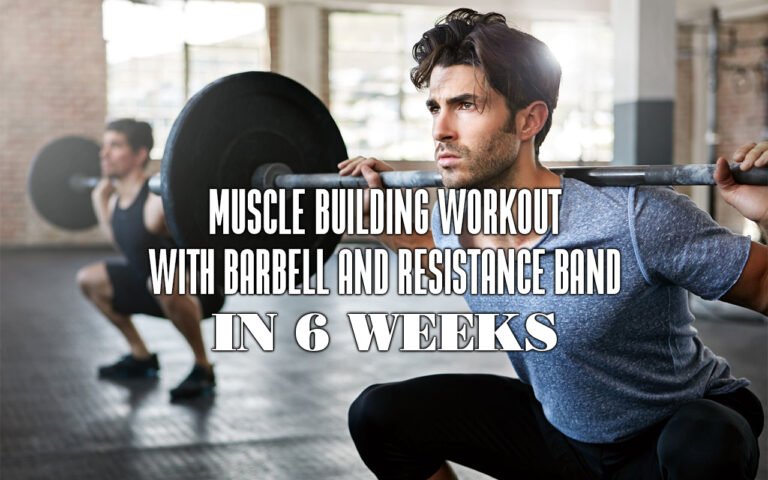This efficient training protocol can help you make the most of limited training time.
If you’re in a hurry to go to the gym but still want to get some good training in, what can you do? Supersets are another popular tool among lifters. They’re a fantastic way to speed up workouts. But there are many more strategies to work at higher quality and faster speeds.
This is where Myo-Reps come into play. Myo-Reps are an excellent training tool that every lifter should have in their arsenal for when they’re pressed for time but want to get some good work in. I utilize the approach in my workouts, and with the clients, I work with on my program.
Let’s go through what you need to know about Myo-Reps: what they are, how to utilize them, and why they might benefit your training objectives.
What Are Myo-Reps?
Borge Fagerli, a Norwegian strength coach, popularized the Myo-Reps training technique in the mid-2000s. The goal of a rep scheme and training approach is to keep “junk volume” (a.k.a. training volume that we wouldn’t consider effective for hypertrophy [muscle-building] gains) to a minimum.
We all know that not all reps are created equal while enhancing muscular hypertrophy. We can build up more effective training volume by minimizing “junk volume” from our workouts.
In training terminology, Myo-Reps is a kind of rest-pause training designed to follow specific criteria when putting together their design. The following four parameters, which we’ll address in greater depth below, establish a framework for Myo-Reps that lifters from all walks of life may apply this method according to the demands of their own training.
How to Use Myo-Reps?
Let’s start with Myo-Reps by making a few points before getting started. Remember, when employing and utilizing Myo-Reps, you must keep two things in mind. First, accessory movements and single-joint activities are best suited for Myo-Reps. We prefer to use exercises to push for higher reps and intensities without experiencing too much technical failure.
Second, unless you need them in a hurry, it’s usually advisable to give Myo-Reps or similar products a few weeks or the whole training cycle. This will allow you to track your progress better and get the weight you desire.
How to Set Workout With Myo-Reps?
For this example, we’ll take a look at a leg extension. You may then utilize the framework below in conjunction with your program’s context and objectives.
Set 1: “Activation Set” | 0 to 1 Reps In Reserve | Leg Extension 1 x 20 reps
The “activation set” is the first Myo-Rep package. A heavier rep range will be used for this set that’s taken near failure to pull more muscle fibers into the following ideally. You may use several reps goals here, but I frequently utilize 16 or 20.
Since we’re working with a higher rep range, we’ll need to scale our intensity back as well. Beginners, intermediates, and advanced athletes should all scale their training according to the exercise they’re planning to perform. As follows:
- Beginner: 40 percent 1-RM
- Intermediate: 50 percent 1-RM
- Advanced: 60 percent 1-RM
After your activation set, you’ll take three to five deep breaths (about 15 to 30 seconds), followed by sets 2 to 5.
Sets 2 to 5: Mini-Sets | Leg Extension 5 reps
The following sets will be smaller, and we’ll use our breaths to keep track of our rest periods between them. Ideally, we want to shoot for five total sets that are approximately 25% of the activation set; in our example of 20 reps, we’d aim for 5-rep mini-sets after.
In reality, if you don’t want to use the 25 percent rep scheme, you may aim for anywhere from three to five reps in the mini-sets.
You’ll reach a point where you’ll abandon your mini-sets due to two distinct hard stop criteria.
- If you miss reps on a mini-set, stop after that.
- For example, you may hit 5 reps for sets 2 and 3 before hitting 4 for set 4. You would stop after completing set 4.
- By the time you’ve completed five total mini-sets, you’ll have mastered this workout.
Remember, Myo-Reps may be used on almost any exercise, but a coach and lifter should use strategy when putting them into practice. Make your Myo-Rep sets more organized using the parameters above.
Benefits of Training With Myo-Reps
There are several advantages to Myo-Rep pairings, and the benefits will fluctuate based on your training objectives and requirements in real life.
-
Quality Volume In Limited Time
Myo-Rep sets are ideal for saving time and maintaining high training volume, as previously said. Muscle hypertrophy-focused training might take a long time, especially as we scale up the amount of work done. Myo-Reps have shown to be an effective method for accelerating this adaptation in time-restricted circumstances.
-
Challenge and Depth of Training
Another advantage of Myo-Rep training is that it can provide lifters with a unique physical and mental challenge. It’s critical to challenge yourself with both your body and mind as a lifter, and Myo-Rep sets are ideal for that. Plus, learning about this training technique might help you expand your lifting toolbox in a meaningful way.
Give Myo-Reps a go if you’re in a hurry or want to test out a new training routine. They may be the difference between a decent exercise and an excellent one, extending your training horizons and providing you with even more gains to help you reach your objectives.







